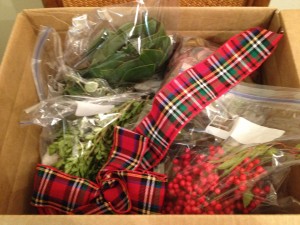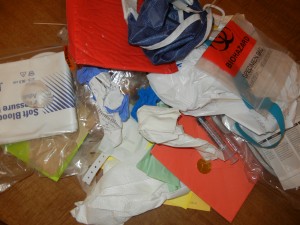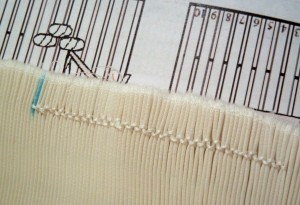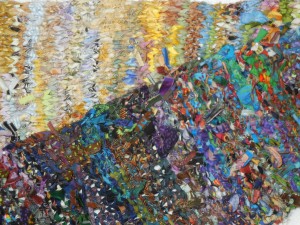Do you ever get creative ideas late at night? But then, you don’t have the fabric or supplies you need for your plan? This happens to me all the time, and is frequently the catalyst for serious improvisation.
Take, for instance, my 11 P.M. decision to re-learn how to knit. I had been thinking that it would be fun to try it again. And since my sewing machine was unavailable, it seemed like a good opportunity to do so, (after a 30 year break!)
I went hunting for supplies and was surprised to find that I still owned 1 pair of knitting needles. All I needed. But, I didn’t have any yarn! Hmm. What could I use instead? Twine or something? Then, I spotted this bag on my sewing table.
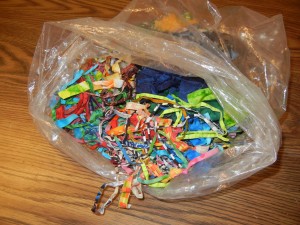
These scraps are from my local quilt store. When they cut fat quarters, they trim a small amount from the creased edge and save the pieces in a bag. When the bag is full, they sell it. I love these little guys. I’ve used them for gift wrapping, as stems for flowers (in a quilt,) and lots of other stuff that I don’t even remember. I wondered if I could tie them together to make a long piece, just for learning. (I mean, you wouldn’t want knots in an actual project, right?)

Not being a fan of stripes, I hunted for scraps that were all light. (How weird. I was willing to put up with knots, but not stripes!)
Next, I went online, found video tutorials, and relearned how to knit – knots and all. (Notice how I lumped all of that into one sentence, as though it happened quickly? Not true. I spent a litle while dropping “yarn,” dropping stitches, and untangling my little mess.) But, eventually, I made progress, and was having lots of fun with my little sampler, knots and all.
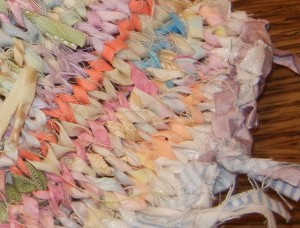
Now that I’ve mastered the basics, I guess it’s time to buy some yarn.
What kind of improvisation have you had to do late at night? (Or any other time, for that matter?)
Ellen Lindner
P.S. See the quilt with the scrap stems. (An interesting design note: this quilt started with just the circles. The addition of stems turned them into plants. And the angled, curvy nature of the stems added lots of interest and motion.)
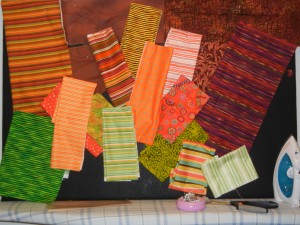
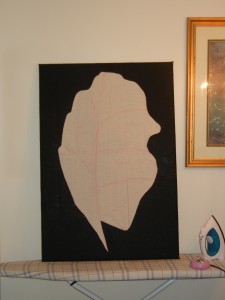
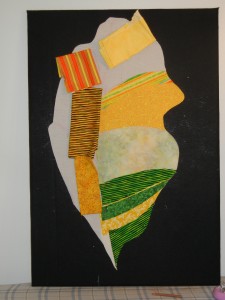
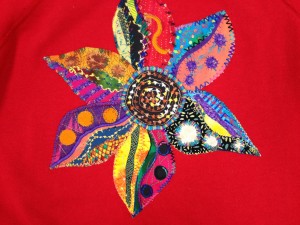
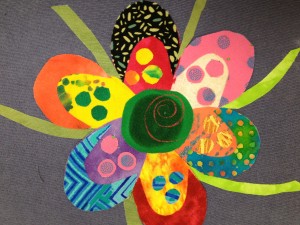
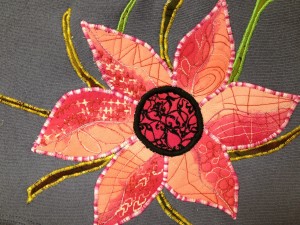
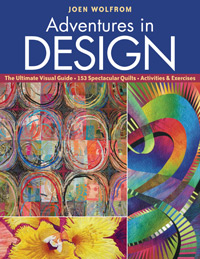
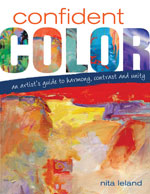
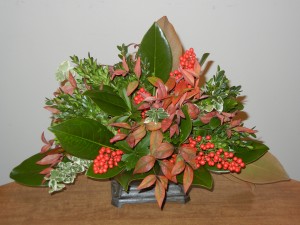

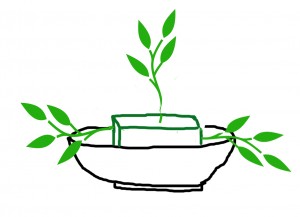
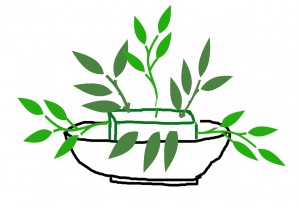
 Avoid having things too “perfect.” Let it look natural, with some pieces closer to horizontal, others more vertical, some leaning forward, some back, etc
Avoid having things too “perfect.” Let it look natural, with some pieces closer to horizontal, others more vertical, some leaning forward, some back, etc